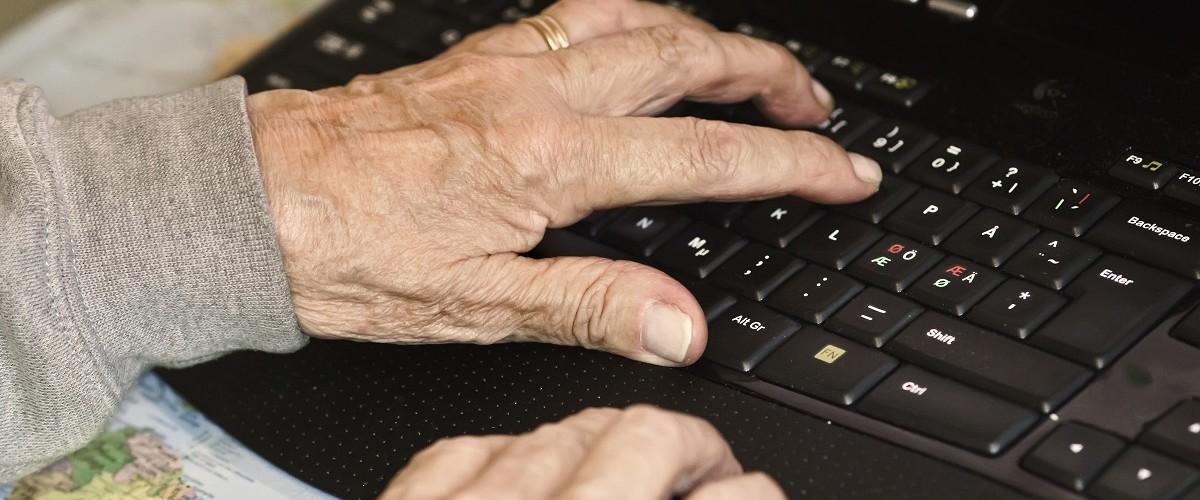Many people in a vulnerable position feel that electronic social welfare and health care services are difficult to use and utilise.
Problems related to the use of digital services came to light in an interview study conducted as part of the DigiIN project during the coronavirus epidemic, the respondents to which included older people, unemployed people and mental health rehabilitees. In addition, this issue has emerged in the project’s extensive population surveys. The DigiIN project aims to find solutions to prevent exclusion from electronic services.
“Social welfare and health care services are increasingly being transferred online. The needs of vulnerable people have been ignored when the services were developed. The inability to use digital services increases inequality and the risk of exclusion,” explains Tarja Heponiemi, Research Professor at the Finnish Institute for Health and Welfare.
Project researchers have compiled nine measures to improve the equal accessibility, safety, quality, and customer-centred approach of digital services.
The proposals are intended for policy makers and anyone who organises, implements, or produces digital services, including the public sector as well as the private and third sectors that supplement it.
Real-time local support and easy language increase accessibility
According to the proposals, real-time local support must be organised for digital services, which can be arranged in a face-to-face meetings or even in an online chat with an expert.
Support should also be provided in all the languages spoken most commonly in Finland.
“Support that aims to help people adopt basic digital skills alone is not enough, as the difficulties in using digital services are not always about actual digital skills but are due to the language or logic of the service being too unclear. The problem may originate from the client simply not knowing what service or benefit they could apply for in their situation,” says Professor of Social Policy Anne Kouvonen from the University of Helsinki. Kouvonen heads the DigiIN project’s multiculturalism theme.
According to the proposals, the comprehensibility of the content and operation of digital services should also be improved in a manner that ensures well-functioning services are also available to people who experience minor memory disorders or problems with concentration or those who have difficulties reading and writing. This is possible, for example, when instructions are provided in easy language.
In order for clients to find digital services and understand the added value they provide, information on these services should be provided on a broad range of channels.
“Captivating communication, such as appealing visual content, could encourage more and more people to try digital services,” Heponiemi says.
Private customer facilities in public places enable digital services
Researchers propose the addition of private spaces with loan computer terminals to public facilities for the use of digital services.
“Not everyone can access services privately at home because there are other people in the same space, or they do not own a computer, webcam, or headset. In public facilities, loan terminal equipment is usually placed in an open space. However, everyone should be guaranteed the right to handle matters related to their health and welfare in a manner that ensures their privacy,” says Kouvonen.
The aim should also be the harmonisation of information security assessment of services. Service providers need examples of safe platforms that are suited for the implementation of services and communication with customers. It is also important to clearly explain information security to clients.
Many real-time remote services continue to operate traditionally by phone. Clients should also be offered ever more extensive opportunities for using a video connection.
With the help of expressions and gestures transmitted via the video connection, digital services can be easier for those with impaired hearing or speech, difficulty in emotional expression or newly developing Finnish language skills.
Personnel needs training to serve different customer groups
The personnel of service providers need new types of communication skills to work digitally with their clients. According to the recommendation, the personnel’s competence needs must be assessed and their competence must be supplemented with training and support.In addition, service-specific instructions must be developed for personnel to help them identify clients with different starting points and to select a suitable service method for each one.
“There will always be people who, for one reason or another, cannot use digital services even when supported. For this reason, we must ensure that they always have easy access to local services,” Kouvonen and Heponiemi emphasise.
Proposals for measures have been made in the DigiIN project in collaboration by the Finnish Institute for Health and Welfare (THL), the University of Helsinki and Aalto University.
Further information
Tarja Heponiemi
Research Professor
Finnish Institute for Health and Welfare
Tel. +358 29 524 7434
tarja.heponiemi(at)thl.fi
Anne Kouvonen
Professor of Social Policy
University of Helsinki
Tel. +358 29 412 4593
anne.kouvonen(at)helsinki.fi
